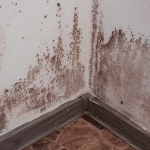Roofs last around 20 to 25 years depending on the material, so it’s important to consider this before installing a new roof.
Installing a new roof is a big investment. You want to plan thoroughly before taking the plunge. Perhaps you’re about to start the process but you’re still slightly nervous.
Sound familiar? If so, you’ve come to the right place. Here are seven things to consider before installing a new roof.
Signs You Need a New Roof
Before working out the cost of a new roof, take a look at its current condition.
Check if water is leaking into your home, if the shingles are visibly cracked, and if the roof sags. You should also evaluate the roof for signs of mold, moss, or mildew, as these indicate that moisture is trapped.
Further, consider your energy bills. If there’s been a spike, your roof is likely leaking hot or cool air and must be replaced immediately.
The 7 Things to Consider Before Installing a New Roof
You’ve browsed the different types of roofs and you’re still stumped. How do you know it’s the right one? Read these seven considerations before you start the roof installation.
1. Roofing Material
The most important consideration for your roof installation is finding the perfect material. When choosing one, factor in its appearance, price, and lifespan.
Many homeowners choose asphalt because it’s affordable, but it doesn’t last as metal and concrete. You shouldn’t choose the cheapest material because it may be of poor quality and you’ll have to start afresh.
You should also consider the shape of your roof. Whether it’s a flat or a pitched roof, figure out which material will work best for your home before you start the roof replacement process.
2. Roof Removal
Before replacing a roof, ask the contractor how they’ll remove the original roof. Once that’s decided, make sure you have a system of removing materials. Otherwise, it’ll make a mess and become a potential hazard.
The contractors will likely bring a container to store the old material. Therefore, keep it out of the way so it’s easy to dispose of.
3. Focus on the ROI
Every homeowner wants to cut costs, but it’s important to focus on the ROI and value that your new roof will bring. You should also ask the contractor whether the quoted price will cover the costs of the roof material and installation.
It’s wise to shop around to compare prices before signing a contract. Don’t be afraid to ask friends and family for references, and make sure the company has the right insurance and licenses should a problem arise.
4. How Often You Need Inspections
Note that different types of roofs need regular maintenance and inspection to increase the lifespan of their products. Many contractors won’t charge you for this and they’ll determine whether you’ve got leaks, broken shingles, or other issues.
Plus, after listening to the contractor’s opinion, you can decide whether to choose a full or partial roof replacement.
5. Warranty on the Materials
Before you install the new roof, consider the warranty. You should have two: a manufacturer’s warranty and a workmanship one. The latter covers issues that occur because of the poor installation.
Read the manufacturer’s warranty properly because it must include a full replacement lifetime warranty. Contractors can only qualify for this after their product has been certified and they’ve agreed to install the entire system designed by that manufacturer. Because of this, your contractor must be certified.
6. Choose Between Peeling Off or Layering
Another important consideration is whether you will remove the existing shingles or layering the new roof over them. Note that to comply with the building code, you can’t have more than two shingle layers on your roof.
Because the new layer will put more stress on your room, it’s wise to peel off the original layer, especially if the shingles are curling or your roof is uneven. A bonus is if you’re in a cold climate then peeling the old layer off will let you install an ice shield, made from rubber, to prevent leaks occurring if ice builds up.
Still undecided? Then check the original structure for any damage. If any sheathing is soft or broken in areas, then remove the existing layer. Otherwise, rain may leak through the ceiling.
7. Choose the Right Contracting Company
Although many homeowners can tackle this DIY project, it’s wise to choose a professional roofing company to install the new roof. But note that many contractors mainly work with shingles and don’t deal with concrete, ceramic tiles, and other unconventional materials.
Contractors don’t rely on repeat customers, as roofs only need to be installed every couple of decades. Because of this, customer satisfaction isn’t a top priority. If you’re happy with the quote, ask for referrals to hear what clients honestly think of the results.
Further, you’ll see whether the contractor has done a similar project and if they’ve done that well. If so, then the contractor is right for the job.
That’s Everything About Installing a New Roof
Now you know the seven things to consider before installing a new roof.
Check for signs that you need a roof replacement, and then shop around to find an ideal quote and company. You must also factor in the material, whether there’s a warranty, and how much the installation will add value to your home.
Then you can start the process. Good luck!
Did you find this article helpful? If yes, check out our posts on everything from Home to Real Estate.



